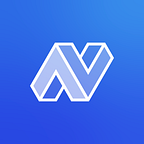Web 3.0 and Blockchain
With the introduction of the Internet into our lives in the 1990s, a great deal of argument has changed. In 1999, the creator of the World Wide Web, computer scientist Tim Berners-Lee expressed that the Internet could develop much more. Also, the users could change the Internet according to their own needs, and virtual machines could transfer data and talk to each other with the use of artificial intelligence. This version of the Internet is called “Web 3.0”.
Although the idea of Web 3.0 dates back to the early 2000s, blog posts and thoughts on this subject go back to the mid-90s. With the work done, the preparations for Web 3.0 are almost complete.
Where does the name Web 3.0 come from? Let’s take a quick look at the history of the Internet:
The Internet first began with the static delivery of data to the user. At this stage, which is called Web 1.0, it is not possible to change the data by the user, which means there is no interaction, so it is one-sided.
With the increase in needs, the understanding of the Internet began to change and develop. In the new Internet concept called Web 2.0, the user started to take an active role in the processing and usage of data. The statically presented Web 1.0 has now left its place to Web 2.0, used dynamically, can be changed, and the interaction is two-sided. With the processing of databases, interaction and communication between users has begun.
The innovations brought by blockchain technology have also affected the Internet world. Virtual reality, open-source code software, extensible and sustainable technologies were no longer sufficient for Web 2.0. It needed to be renovated and developed.
The next phase will be called Web 3.0.
What Does Web 3.0 Promise?
Applications in use need to have specific software and hardware. For this, development and device costs are increasing day by day. With Web 3.0, this problem will disappear. Applications can be used on different platforms independently of the device without requiring software and hardware. Thus, the dependence on space and time will disappear. Access to open-source code software will be much easier and faster.
Depending on its decentralization, it will be the same in Web 3.0 as the processing and control of distributed ledgers is done in the blockchain system. The person will have his/her data property and will be able to process the data within his/her framework. So, attacks from third parties will be prevented.
With the expansion of the database, the most suitable data for the user will be able to be processed at his/her own will. Developable algorithms will be used to respond to the specific needs of the user.
While searching over Web 3.0, the user will be able to reach the most accurate information and result more safely with the filtering of artificial intelligence without being exposed to censorship, or unnecessary information.
Customer service with improved artificial intelligence, customer problem-oriented, which can serve thousands of customers at the same time, will be used. No one likes to be kept waiting when they have a problem or to have their trouble go unresolved.
Web 3.0 and Cryptocurrencies
Cryptocurrency, a part of the blockchain system, and Web 3.0 technology will be integrated, providing secure payment and instant control. With its decentralization and continuous monitoring, any data processed anywhere in the world will be instantly visible to all users and will not be censored.
By developing smart contracts, the work will be more harmonious. Projects will take place smoothly and harmoniously. With peer-to-peer applications, data will be transferred quickly and securely.
It will be integrated into Web 3.0 with cryptocurrencies using blockchain, the living conditions for all humanity will be much more comfortable. The projects realized for now are just the tip of the iceberg.
